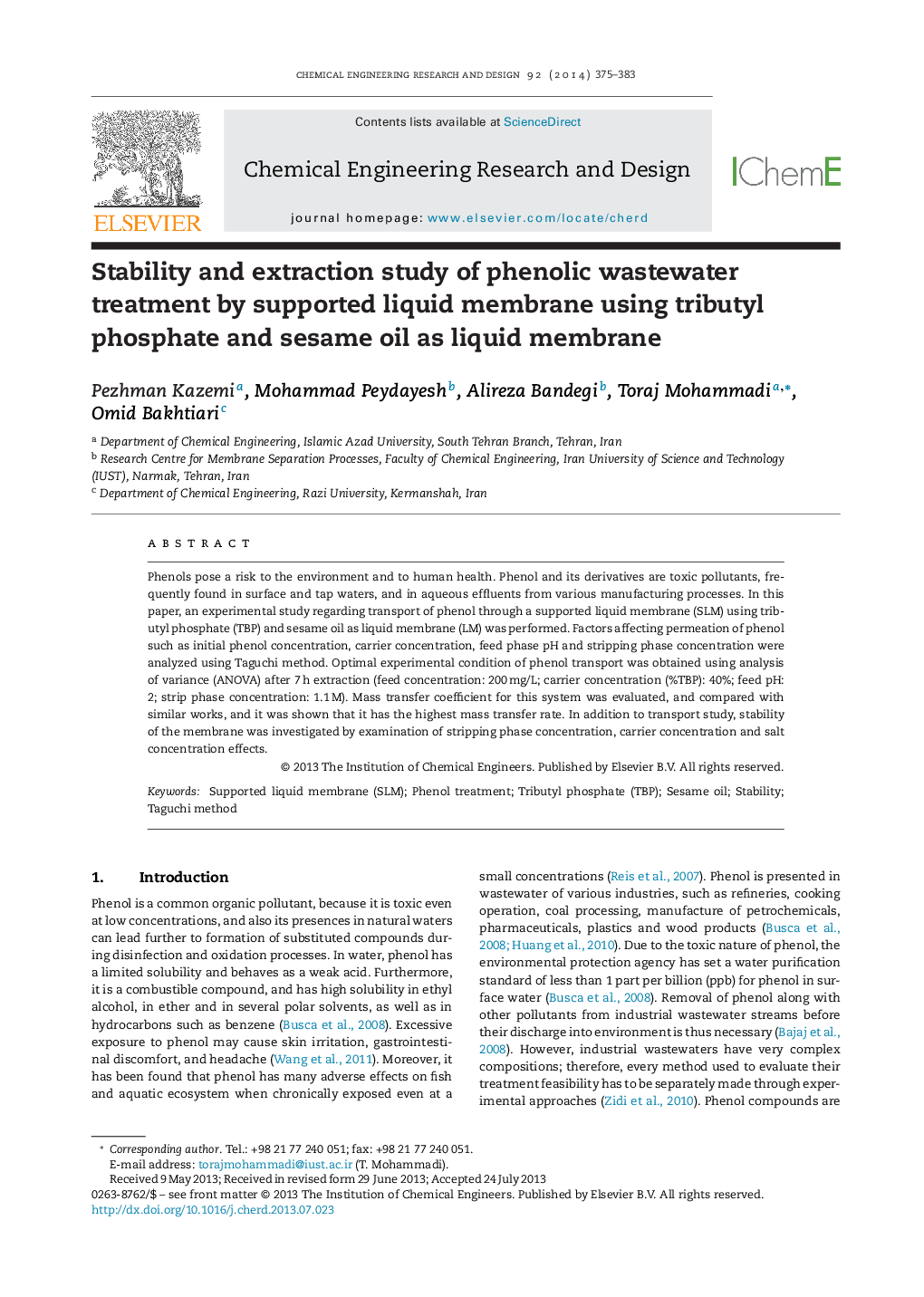| Article ID | Journal | Published Year | Pages | File Type |
|---|---|---|---|---|
| 621325 | Chemical Engineering Research and Design | 2014 | 9 Pages |
•A comprehensive study on stability of supported liquid membrane (SLM) in different operating parameter was done.•Mixture of vegetable oil and tributyl phosphat (TBP) was used as a liquid membrane phase.•Tributyl phosphat (TBP) + sesame oil liquid membrane shows a higher Mass transfer coefficient compared to other liquid membrane.
Phenols pose a risk to the environment and to human health. Phenol and its derivatives are toxic pollutants, frequently found in surface and tap waters, and in aqueous effluents from various manufacturing processes. In this paper, an experimental study regarding transport of phenol through a supported liquid membrane (SLM) using tributyl phosphate (TBP) and sesame oil as liquid membrane (LM) was performed. Factors affecting permeation of phenol such as initial phenol concentration, carrier concentration, feed phase pH and stripping phase concentration were analyzed using Taguchi method. Optimal experimental condition of phenol transport was obtained using analysis of variance (ANOVA) after 7 h extraction (feed concentration: 200 mg/L; carrier concentration (%TBP): 40%; feed pH: 2; strip phase concentration: 1.1 M). Mass transfer coefficient for this system was evaluated, and compared with similar works, and it was shown that it has the highest mass transfer rate. In addition to transport study, stability of the membrane was investigated by examination of stripping phase concentration, carrier concentration and salt concentration effects.
